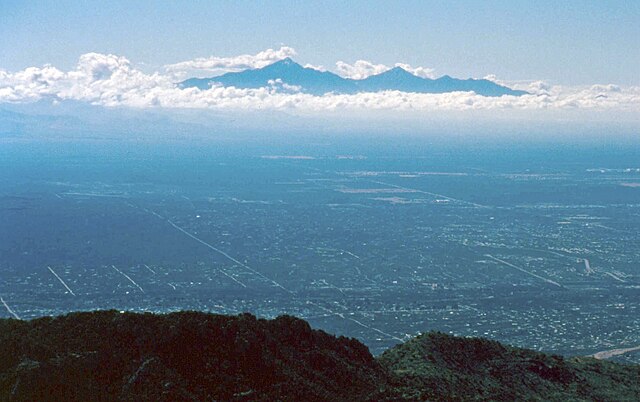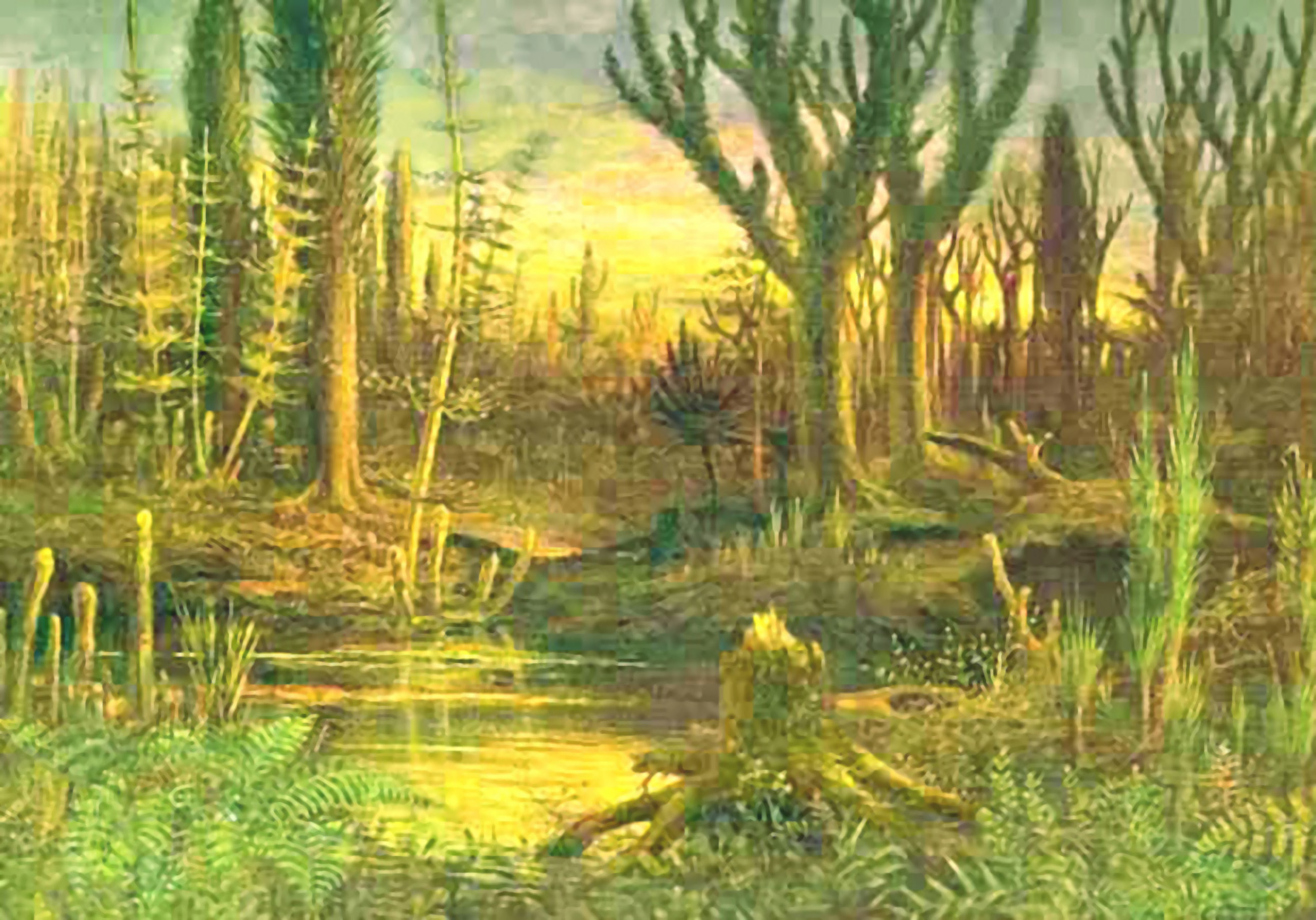 |
| Public Domain |
Earthamore
Sunday 23 August 2015
How rainbows are created
Everyone is familiar with rainbows. That
multicolored band of light arching over the sky on a rainy day is one
of the most amazing spectacles in nature bringing cheer and wonder to
the admiring beholder.
Rainbows are created by light
reflecting in water droplets in the air which causes a spectrum of light
to appear as a multicolored arch in the sky. The water droplets are
usually falling as rain but a rainbow can be formed in a fountain, a
waterfall and sometimes in fog. A rainbow appears to the observer when
the sun is behind them and shining onto rain or water droplets in front
of them. The sun must be behind the observer and the water drops in
front. Read more
Friday 22 May 2015
The Were-plant by the light of the moon!
A rather unremarkable and scruffy looking plant studied by two scientists has been dubbed the were-plant after it was discovered that it only pollinates during the light of the full moon in June. A study Moonlight pollination in the gymnosperm Ephedra (Gnetales) undertaken by Catarina Rydin , Kristina Bolinder, Published, 1 April, 2015, looked at how Ephedra (Gnetales) reproduced
and in doing so made a remarkable discovery. The study is the result
of four seasons of field studies so far which show a surprise
relationship between pollination of one of the study species of plants
with the lunar cycle in one of the species that they were studying.
This work looks at how the discovery was made and what problems the
researchers see for the future of the plant.
Cycles of the moon
The cycles of the moon are are used by a many animals for a number of reasons such as navigation and communication. Now researchers have discovered the first known case of a plant that times its reproduction to the cycles of the moon. The plant is a rather modest shrub found in areas around the Mediterranean and is known as Ephedra foeminea though since the discovery of its connection to the moon it has been nick-named the were-plant. This is because the plant is a non-flowering relative of conifers and instead of flowers produces masses of red and yellow cones which during the full moon in July secretes sugary fluid to attract the nocturnal insects which pollinate it. Read more
 | ||||||
Ephedra foeminea - Author:
Gideon Pisanty (Gidip) -
|
Cycles of the moon
The cycles of the moon are are used by a many animals for a number of reasons such as navigation and communication. Now researchers have discovered the first known case of a plant that times its reproduction to the cycles of the moon. The plant is a rather modest shrub found in areas around the Mediterranean and is known as Ephedra foeminea though since the discovery of its connection to the moon it has been nick-named the were-plant. This is because the plant is a non-flowering relative of conifers and instead of flowers produces masses of red and yellow cones which during the full moon in July secretes sugary fluid to attract the nocturnal insects which pollinate it. Read more
Friday 1 May 2015
The ecology of sky islands
A sky island is a mountain that is situated in isolation within an area of lowlands where the environment contrasts greatly to the environment of the uplands of the mountain. Instead of being surrounded by water they are surrounded by low lying land. In a location such as this the environment changes dramatically from the lowlands to the mountain summit. This results in significant differences evolving in the natural habitat of both lowlands and uplands regions of the mountain.
 |
|
"Sky islands", Santa Catalina Mountains,
Arizona, USA. - Public Domain
|
In such places it is not unusual to find species of fauna or flora that are limited to a certain altitudes. Such species of animals and birds may practice vertical migration up or down the mountain as the weather and seasons change in order to find food or shelter. Read more
How the Cascade Mountains were formed
The Cascade Mountain range of North America is part of the Pacific Northwest section of what is often called the “Pacific Ring of Fire“ that
circles around the Pacific Ocean. The range first began forming
millions of years ago through movement of the earth’s plate and volcanic
action with erosion also playing a part.
The Pacific Ring of Fire
From south to north the Ring runs around the Pacific Rim including the west coast of South and North America, the Aleutian Islands, and then south to north including Japan, Southeast Asia and New Zealand. This circle a volcanically active area that is also prone to earthquakes. Read more
_(croDB1079).jpg) |
| The Cascade Mountains - Attribution: |
From south to north the Ring runs around the Pacific Rim including the west coast of South and North America, the Aleutian Islands, and then south to north including Japan, Southeast Asia and New Zealand. This circle a volcanically active area that is also prone to earthquakes. Read more
The Global Climate System
No matter where one lives on Earth, the weather and
climate play important parts in daily life. The weather is the
changing conditions in the atmosphere that occur all around, such as
rain, snow, wind or sunshine.
What is climate?
Climate is regional or global and is defined by the long-term averages of the extremes and variations in conditions and temperatures over extended periods of time. The climate system is how the atmospheric conditions are influenced by land and ice masses and oceans and how these affect the surface of the Earth. It is comprised of the following five elements that interact with one another and are influenced by other factors such as the Sun, volcanic eruptions and human. Read more
 |
| U.S. National Oceanic and Atmospheric Administration |
What is climate?
Climate is regional or global and is defined by the long-term averages of the extremes and variations in conditions and temperatures over extended periods of time. The climate system is how the atmospheric conditions are influenced by land and ice masses and oceans and how these affect the surface of the Earth. It is comprised of the following five elements that interact with one another and are influenced by other factors such as the Sun, volcanic eruptions and human. Read more
The six big mass extinctions
Through out history Earth has suffered a series of mass
extinction events that saw the continuation of life on Earth
threatened. There has also been a number of lesser extinctions but
this work concentrates on the main mass extinction events. First, we
will briefly define a mass extinction event and then look at the five
most devastating mass extinction events in history. Then the discussion
will look at the sixth and ongoing mass extinction event and conclude
with thoughts for the future.
What is a mass extinction event?
Each extinction varied in intensity and cause but each time life on Earth adapted, evolved and bounced back. A mass extinction event is a time in history where an extraordinary large number of different species die at the same time or within a limited time
The most well known of these events was the Cretaceous-Tertiary extinction which wiped out most of the dinosaurs. Nevertheless, there have been four other mass extinctions, some more devastating than this event, where half or more of all species were estimated to have died.
The most devastating of these events occurred at the end of the Permian period when 96% of species were wiped out. This event and the Cretaceous-Tertiary extinction event are the two main mass extinctions so far.
There have also been a number of smaller scale mass extinctions. For example human activity has caused the extinction of many animal and plant species throughout history and in modern times. In time these will show in the fossil record as a mass extinction. In fact we are going through a sixth mass extinction of plants and animals caused by humans but how devastating that will prove to be only time can tell. Read more
 | |
| Artistic depiction Devonian land and flora - Eduard Riou - Public Domain |
What is a mass extinction event?
Each extinction varied in intensity and cause but each time life on Earth adapted, evolved and bounced back. A mass extinction event is a time in history where an extraordinary large number of different species die at the same time or within a limited time
The most well known of these events was the Cretaceous-Tertiary extinction which wiped out most of the dinosaurs. Nevertheless, there have been four other mass extinctions, some more devastating than this event, where half or more of all species were estimated to have died.
The most devastating of these events occurred at the end of the Permian period when 96% of species were wiped out. This event and the Cretaceous-Tertiary extinction event are the two main mass extinctions so far.
There have also been a number of smaller scale mass extinctions. For example human activity has caused the extinction of many animal and plant species throughout history and in modern times. In time these will show in the fossil record as a mass extinction. In fact we are going through a sixth mass extinction of plants and animals caused by humans but how devastating that will prove to be only time can tell. Read more
What makes a spectacular sunset?
One of the most beautiful and spectacular displays in
nature comes towards the end of the day as the sun slowly sinks below
the western horizon. As it sinks lower its rays have to travel further
through the atmosphere to reach the eyes of the observer.
Light
Light travels in waves which are of different lengths. We normally see light as white, but it is actually made up of different colors. The different colors all have their own wavelength.
Magic
The magic begins as sunlight travels through earth's atmosphere Read more
Light
Light travels in waves which are of different lengths. We normally see light as white, but it is actually made up of different colors. The different colors all have their own wavelength.
Magic
The magic begins as sunlight travels through earth's atmosphere Read more
Subscribe to:
Posts (Atom)
